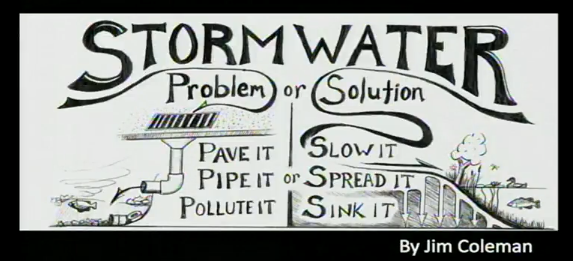 New words alert! A Cienega is our friend at Flow Back in time describes as:
New words alert! A Cienega is our friend at Flow Back in time describes as:
Cienega is typically translated as marsh, but this loses much specificity of meaning. They are found in the Mediterranean-climate zones of California and in the desert Southwest, where rainfall is highly episodic, and particularly in closed basins where stream channels lead to salt lakes or dry lakes. In these regions, rather than running all the way to the sea, creeks are likely to seep into alluvial fans as they emerge from the mountains. This water may resurface in the bottoms of canyons or other lowlands where the water table intersects the surface, but frequently there are not strong flows. A cienega is often a complex of individual springs, seeps, puddles, and wetlands.
The story behind a saved cienega in New Mexico
After Cole, a former Phoenix-area lawyer, retired in 2003, he and his wife, Cinda, searched for a patch of land to restore. They were tired of city life, and in a world threatened by climate change, they yearned for hope. They found what they were looking for in the 12,000-acre Pitchfork Ranch, which harbored remnants of a rare habitat: a sprawling, spring-fed desert wetland known as a cienega.
Cienegas used to be fairly common in Arizona and New Mexico; early Spanish explorers complained about the wide marshes, which festered with malaria and impeded travel. They didn’t realize that cienegas also mitigate flooding and encourage biodiversity, supporting all kinds of fish, birds and plants.
But since the 1880s, many Southwestern cienegas have disappeared. Dean Hendrickson, a fish biologist at the University of Texas-Austin and an expert on cienegas, believes that the most likely culprits are livestock grazing, groundwater depletion and erosion.
The Coles knew nothing about cienega restoration when they purchased their ranch. And the Burro Cienega had been transformed over the years by previous ranchers, who trenched and drained the land and evicted the resident beaver. The cienega now sliced deep into the landscape, more creek than meandering marsh, and much of the life it once supported was gone.
 One day at a yard sale, a friend stumbled upon one of the first scientific papers devoted to cienegas and bought it for $1. According to the paper — which Hendrickson wrote — in order to restore the wetland, Cole needed to recreate the natural process that formed it, by trapping the thousands of tons of dirt that washed downstream with each heavy rain. If he could capture that dirt, the water would be forced to slow down and spread out, and aquatic species might move back in.
One day at a yard sale, a friend stumbled upon one of the first scientific papers devoted to cienegas and bought it for $1. According to the paper — which Hendrickson wrote — in order to restore the wetland, Cole needed to recreate the natural process that formed it, by trapping the thousands of tons of dirt that washed downstream with each heavy rain. If he could capture that dirt, the water would be forced to slow down and spread out, and aquatic species might move back in.
Employing his legal talent for argument and persuasion, he eventually obtained more than $600,000 in public conservation grants. “If I had a client in all of this, it would be the cienega,” he says. Now, instead of advocating to a judge or jury, “I advocate to members of the bureaucracy.”
The restoration struggled at first. Cienegas form naturally when a persistent source of water, like a spring, bubbles over a solid foundation of rock or clay. That attracts plants and animals, and over time, nutrient-rich sediment builds up and creates wide and biologically rich swamps.
But when the rains came, they blasted away the posts Cole had jammed into the stream to trap sediment. Rock structures crumbled. The creek and downstream flood channels kept deepening under the fast-moving water. But after a decade of work — organized by Cole, but carried out by graduate students, government employees, contractors and the Youth Conservation Corps — the wetland is coming back.
Yes that’s right, this hardy lawyer-turned steward received hundreds of thousands of dollars in grant money and countless hours of student labor to do what beavers do for free every day of every year in every place they’re allowed. And would have bravely continued to do for free if they weren’t killed outright. I am touched by Cole’s story but I can’t help being alarmed that an educated man, concerned by climate change, would need to stumble on an old paper which told him to SLOW IT. SINK IT . SPREAD IT. because otherwise he would have NO idea what was necessary to keep water on the land.
What are they teaching people in New Mexico?







































